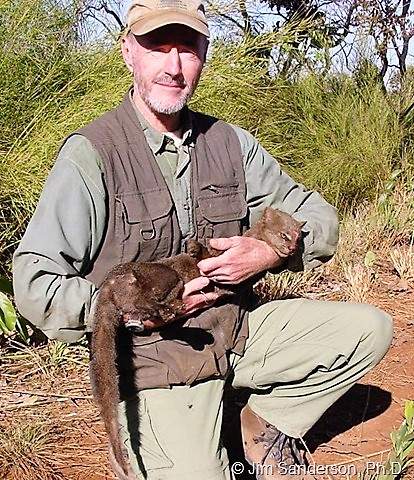Here are 17 facts about the small cats of the Americas. Although each “fact” is more a combination of facts on a particular topic. I hope you find the page useful. The overriding message regarding these precious animals is that they need to be protected in a world that is becoming more and more difficult for them. And we need to know more about them and watch over them with more diligence.

- There is a wide variety of species of small wild cat in the Americas thanks to the diversity of topography and climate.
- The puma, is regarded as a small-big cat and is the largest of the small cats. It has been successful throughout all the Americas and is the most widely distributed wild cat of the Americas.
- The bobcat, a medium-sized cat, is ubiquitous in North America but it has been persistently hunted for its fur which for animal advocates is unpleasant.
- In South America a range of smaller wild cats evolved many of which are similar in size to the domestic cat and also in appearance but none of them were domesticated as was the case with the North Africa wildcat which has a better temperament more suited to domestication.
- During the evolution of the wild cats of the Americas, scientists believe that many of them evolved in North America and were then allowed to migrate to South America when these two large land masses joined together millions of years ago. And when in South America they diversified through further evolution to create the current number of species.
- It is likely that the small American wild cat species are related genetically. The ocelot, margay, tiger cat, kodkod and Geoffroy’s cat are thought to be strains of one species.
- The small wild cats of the Americas are: the rain forest dwellers such as the ocelot looking like a miniature leopard and the tiger cat a.k.a. oncilla. And the acrobatic margay, a tiny tree-dwelling cat with flexible wrists allowing them to behave almost like monkeys. And then there is the Geoffroy’s cat, a fantastic tree climber. The Pampas cat has long fur and is found in open grassy areas. The kodkod is the smallest cat of the Americas, about half the size of a domestic cat. The Andean mountain cat is also small and about 8-9 pounds, living in the high Andes of South America. The jaguarundi is a strange looking cat resembling a weasel. The wild cats of North America include the lynx species and the bobcat. Many of these species have very low numbers and worse: we don’t know their population sizes. We guess.
- There is still a lot more to know about the small wild cats of the Americas but their secretive lifestyle and a lack of funding or commitment are barriers to education.
- The jaguarundi was tamed by local Indians before the Spanish arrived in South America.
- South America has one big cat: the jaguar, which has been worshipped for centuries. It’s mystical presence has had a long-term impact upon the native peoples of South America. The jaguar’s range is sympatric with the range of the puma. They’ve both played significant roles in the mythology of pre-Colombian civilisations.
- The Bobcat is a subspecies of the lynx family and is widely distributed from Nova Scotia all the way down to Mexico. It’s black-spotted brown coat is perfect camouflage for the rocky and bushy terrain in which it hunts.
- The ocelot has suffered terribly at the hands of human misplaced behaviour because it has the misfortune of having a beautiful coat which humans like to take off it. That heavy persecution has stopped because of legislation to protect it but its population size was dramatically reduced. However, it was hunted to extinction in parts of North America.
- The lynx is the only member of the cat family that is distributed on both sides of the Atlantic as it is also found in Europe i.e. the European lynx, which is the largest species of lynx. In America they are almost reliant upon snowshoe hares which affects their numbers.
- The puma has the most names of any cat, somewhat confusingly sometimes. It is the largest member of the genus Felis and has a huge range of prey animals from rodents to deer. Sadly, the puma has a propensity to attack farmers’ livestock resulting in retaliatory killings and was hunted to extinction in various parts of America. It is still hunted but also protected.
- The Florida panther’s tiny population size threatened its extinction through inbreeding causing infertility but conservationists have injected fresh blood from the West which means the Florida panther is no longer purebred. Roads fragment the Florida panther’s home. Humans and Florida panthers find it hard to live in harmony.
- Not infrequently you can read stories about jaguarundi being present in the East of America but technically it is not present there and therefore these are normally escaped, tamed jaguarundi. There have been many sightings causing some confusion because people are unfamiliar with the appearance of this small wild cat although the Internet has been very informative.
- You can’t talk about the small cats in the Americas without touching on the threats to their existence in the wild. I’ve already mentioned this in passing but there is constant pressure on the numbers due to human behaviour which inevitably expands as human population numbers grow. The most serious threats are the fur trade, exotic pet trade and loss of habitat. Hunting them for their skins which was a huge business until the late 20th century has now more or less stopped but the damage was done to which you add habitat loss and therefore, they are endangered. One problem is that the people charged with monitoring their conservation are asleep, namely the IUCN Red List.

Click on the link below for more.
Below are some more articles on small wild cats.

